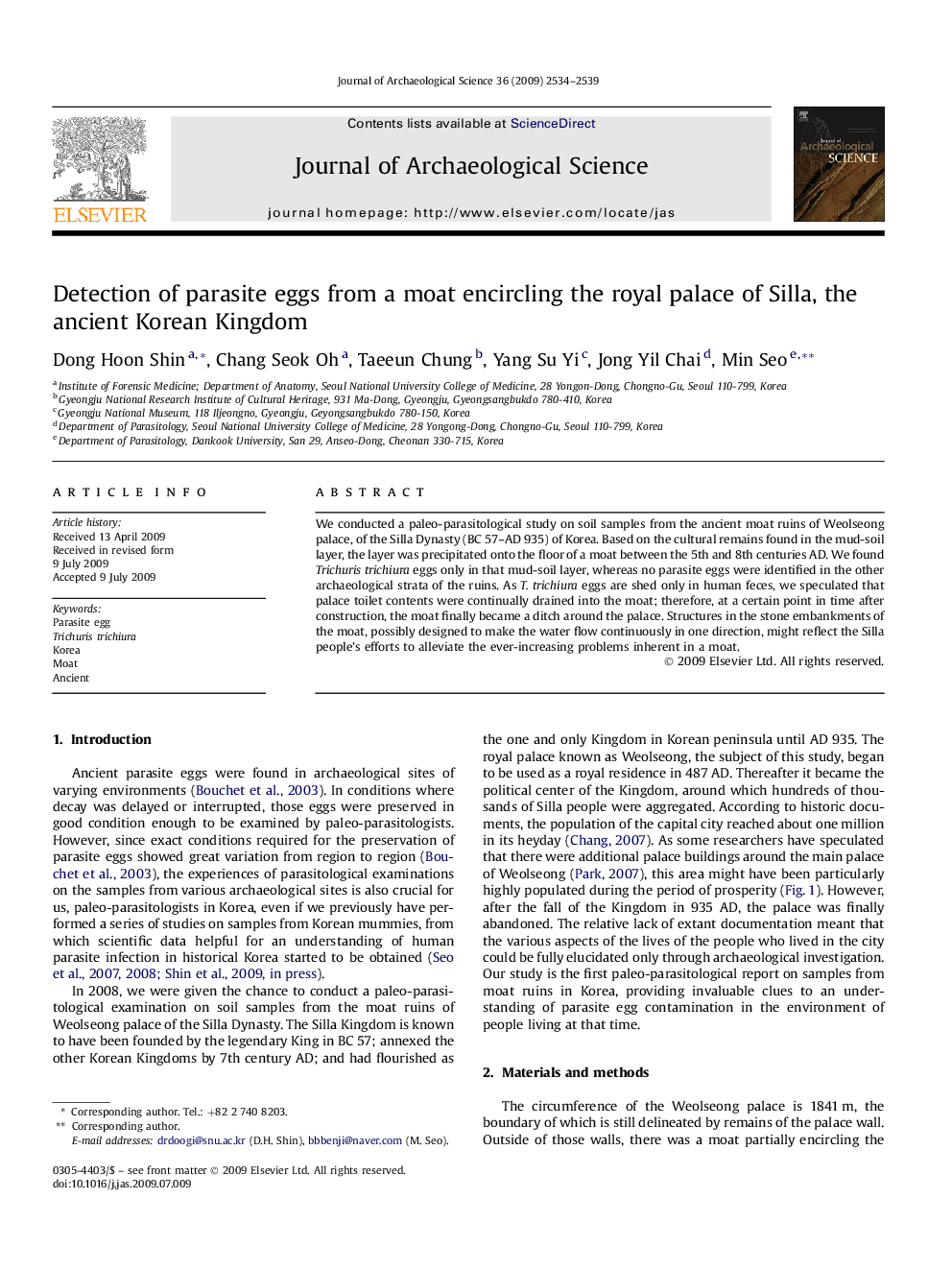| Article ID | Journal | Published Year | Pages | File Type |
|---|---|---|---|---|
| 1036846 | Journal of Archaeological Science | 2009 | 6 Pages |
Abstract
We conducted a paleo-parasitological study on soil samples from the ancient moat ruins of Weolseong palace, of the Silla Dynasty (BC 57-AD 935) of Korea. Based on the cultural remains found in the mud-soil layer, the layer was precipitated onto the floor of a moat between the 5th and 8th centuries AD. We found Trichuris trichiura eggs only in that mud-soil layer, whereas no parasite eggs were identified in the other archaeological strata of the ruins. As T. trichiura eggs are shed only in human feces, we speculated that palace toilet contents were continually drained into the moat; therefore, at a certain point in time after construction, the moat finally became a ditch around the palace. Structures in the stone embankments of the moat, possibly designed to make the water flow continuously in one direction, might reflect the Silla people's efforts to alleviate the ever-increasing problems inherent in a moat.
Related Topics
Physical Sciences and Engineering
Materials Science
Materials Science (General)
Authors
Dong Hoon Shin, Chang Seok Oh, Taeeun Chung, Yang Su Yi, Jong Yil Chai, Min Seo,
